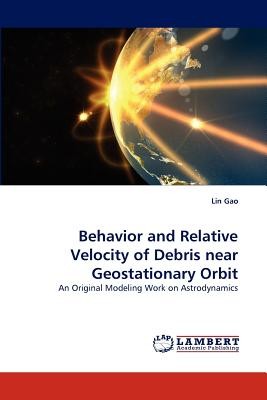
- We will send in 10–14 business days.
- Author: Lin Gao
- Publisher: LAP Lambert Academic Publishing
- ISBN-10: 3844316299
- ISBN-13: 9783844316292
- Format: 15.2 x 22.9 x 0.5 cm, minkšti viršeliai
- Language: English
- SAVE -10% with code: EXTRA
Behavior and Relative Velocity of Debris Near Geostationary Orbit (e-book) (used book) | bookbook.eu
Reviews
Description
This monograph concentrates on the modeling of the astrodynamic behavior of geostationary orbit (GEO) debris, and apply that in calculating the relative velocity between GEO debris. A general model was firstly developed describing third-body gravity perturbation to debris'orbit. The model is proved by applying it to the precession of the lunar orbit. It's then used to tell the motion of GEO debris in both short and long term. Without considering the Moon's precession around the solar pole, the relative velocity between GEO debris can be calculated. A simulation was done and the value of the relative velocity between GEO debris was given. This is an important coefficient for simulating the GEO debris environment and can serve as an input to break up models.
EXTRA 10 % discount with code: EXTRA
The promotion ends in 23d.00:19:37
The discount code is valid when purchasing from 10 €. Discounts do not stack.
- Author: Lin Gao
- Publisher: LAP Lambert Academic Publishing
- ISBN-10: 3844316299
- ISBN-13: 9783844316292
- Format: 15.2 x 22.9 x 0.5 cm, minkšti viršeliai
- Language: English English
This monograph concentrates on the modeling of the astrodynamic behavior of geostationary orbit (GEO) debris, and apply that in calculating the relative velocity between GEO debris. A general model was firstly developed describing third-body gravity perturbation to debris'orbit. The model is proved by applying it to the precession of the lunar orbit. It's then used to tell the motion of GEO debris in both short and long term. Without considering the Moon's precession around the solar pole, the relative velocity between GEO debris can be calculated. A simulation was done and the value of the relative velocity between GEO debris was given. This is an important coefficient for simulating the GEO debris environment and can serve as an input to break up models.


Reviews